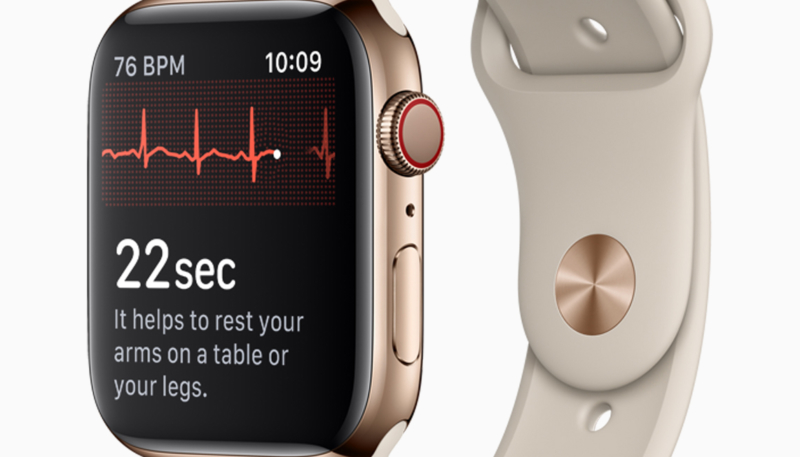The two FDA clearances Apple received for the Apple Watch Series 4’s electrocardiogram (ECG) capabilities came from data collected via the Apple Heart Study, says a report from Thursday.
Apple got two FDA clearances through a “de novo” pathway, meaning it had to use data to show that its device worked, and that it was safe. For the ECG clearance, the FDA reviewed a study conducted by Apple and Stanford University in California. This study, called the Apple Heart Study included 588 individuals, half of whom had AFib and the other half of whom were healthy. The app was able to identify over 98% of the patients who had AFib, and over 99% of patients that had healthy heart rates. Cardiologists were able to read 90% of the total readings, although about 10% of them were unreadable.
Apple announced the new Apple Watch Series 4 and its ability to take a ECG on stage Wednesday at the company’s “Gather Round” event. The product is the first Apple product to receive FDA clearance.
The Apple Heart Study was conducted by Apple in cooperation with Stanford Health and began last November, and only recently began winding down.
While many were impressed, Andrew Moore, an emergency department physician at the Oregon Health and Science University, told Quartz the watch’s abilities don’t mean much, and the Series 4 doesn’t qualify as a medical advice.
“The tech that Apple is working with is very rudimentary compared to what we’d do for someone in a hospital or health care setting,” Moore told Quartz. “The ECG thing is a little bit overhyped in terms of what it will really provide.”
“The tech that Apple is working with is very rudimentary compared to what we’d do for someone in a hospital or health care setting,” Moore said. Although the watch can detect changes in the patterns of a person’s heart rate, these changes really only show a user if she has a heart rate that is too fast, too slow, or beating irregularly—signifying AFib. The watch won’t necessarily give the full picture a doctor would need to diagnose a medical issue.
However, it should be noted that Apple didn’t claim that the new Apple Watch is a replacement for professional monitoring or medical attention, merely warning a user that, “you should talk to your doctor,” allowing the doctor to get the “full picture” to diagnose the issue.


